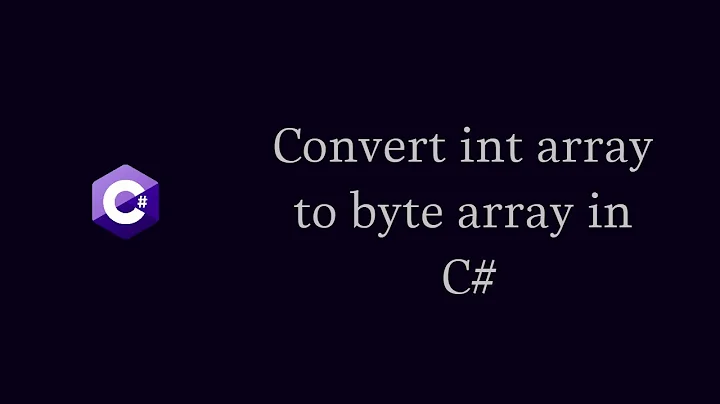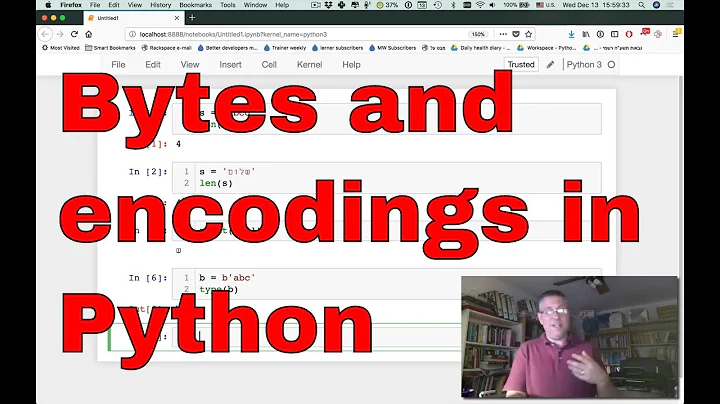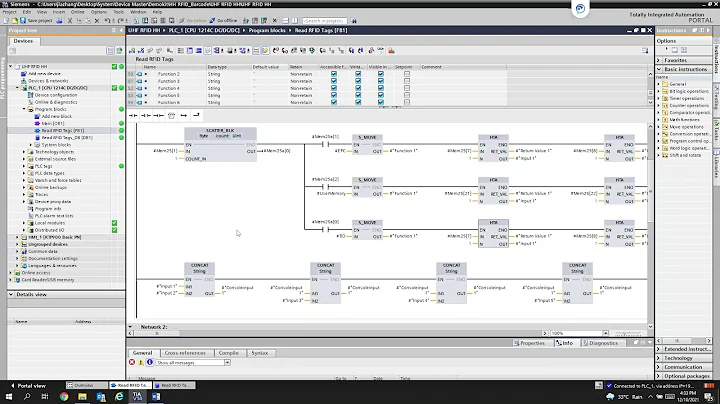How can I convert an int64 into a byte array in go?
Solution 1
Converting between int64 and uint64 doesn't change the sign bit, only the way it's interpreted.
You can use Uint64 and PutUint64 with the correct ByteOrder
http://play.golang.org/p/wN3ZlB40wH
i := int64(-123456789)
fmt.Println(i)
b := make([]byte, 8)
binary.LittleEndian.PutUint64(b, uint64(i))
fmt.Println(b)
i = int64(binary.LittleEndian.Uint64(b))
fmt.Println(i)
output:
-123456789
[235 50 164 248 255 255 255 255]
-123456789
Solution 2
You can use this too:
var num int64 = -123456789
b := []byte(strconv.FormatInt(num, 10))
fmt.Printf("num is: %v, in string is: %s", b, string(b))
Output:
num is: [45 49 50 51 52 53 54 55 56 57], in string is: -123456789
Solution 3
If you don't care about the sign or endianness (for example, reasons like hashing keys for maps etc), you can simply shift bits, then AND them with 0b11111111 (0xFF):
(assume v is an int32)
b := [4]byte{
byte(0xff & v),
byte(0xff & (v >> 8)),
byte(0xff & (v >> 16)),
byte(0xff & (v >> 24))}
(for int64/uint64, you'd need to have a byte slice of length 8)
Solution 4
The code:
var num int64 = -123456789
// convert int64 to []byte
buf := make([]byte, binary.MaxVarintLen64)
n := binary.PutVarint(buf, num)
b := buf[:n]
// convert []byte to int64
x, n := binary.Varint(b)
fmt.Printf("x is: %v, n is: %v\n", x, n)
outputs
x is: -123456789, n is: 4
Solution 5
Here's a simple function that should accomplish what you are wanting:
func Int64ToBytes(number int64) []byte {
big := new(big.Int)
big.SetInt64(number)
return big.Bytes()
}
Related videos on Youtube
Comments
-
Charles L. almost 2 years
I have an id that is represented at an
int64. How can I convert this to a[]byte? I see that the binary package does this for uints, but I want to make sure I don't break negative numbers.-
 starriet over 2 yearsin short:
starriet over 2 yearsin short:intoruintis just how CPU "interprets" the underlying bits. The underlying bits(11100101...) in the memory remain the same. If it'suint, the interpreting is straightforward. But if it'sint, there are several ways to interpret/represent negative numbers from/to bits (two's complement is a popular way).
-
-
 mh-cbon almost 7 yearsHi, should i use the constants
mh-cbon almost 7 yearsHi, should i use the constantsMaxVarintLenXXto determine the size of buffer before put ? -
John Balvin Arias almost 6 yearswhat is the b := buf[:n] line for?
-
JimB about 5 years@JohnBalvinArias: it's because this example uses a variable length encoding
-
Marcus Ilgner over 4 yearsNo,
PutUint64uses fixed length encoding. You only needMaxVarintLenXXwhen usingPutVarint. -
 Martin Zvarík over 2 yearsI have slice of 6 bytes... is that possible? And I need timestamp from that... [224, 221, 199, 147, 195, 47] should get to 1632933900000
Martin Zvarík over 2 yearsI have slice of 6 bytes... is that possible? And I need timestamp from that... [224, 221, 199, 147, 195, 47] should get to 1632933900000 -
c-o-d over 2 yearsvery inefficient answer
-
 Jorvy over 2 yearsfunc Int64ToBytes(number int64) []byte { big := new(big.Int) return big.SetInt64(number).Bytes() }
Jorvy over 2 yearsfunc Int64ToBytes(number int64) []byte { big := new(big.Int) return big.SetInt64(number).Bytes() }

![User Input & Parsing [Go Tutorials #23]](https://i.ytimg.com/vi/YnhmdAFndJI/hq720.jpg?sqp=-oaymwEcCNAFEJQDSFXyq4qpAw4IARUAAIhCGAFwAcABBg==&rs=AOn4CLAG2uTSSI7kIvn81EOxHNskoYV6cA)
![Type Conversions in Go [Go for Beginners #6]](https://i.ytimg.com/vi/SQ8eW8EWQC4/hq720.jpg?sqp=-oaymwEcCNAFEJQDSFXyq4qpAw4IARUAAIhCGAFwAcABBg==&rs=AOn4CLCxJQh93MCDMZARgWLq-CPkRzIOmA)







![Converting Swift array of [Int64] into NSArray - Array](https://i.ytimg.com/vi/d3w0sA6_nYY/hq720.jpg?sqp=-oaymwEcCNAFEJQDSFXyq4qpAw4IARUAAIhCGAFwAcABBg==&rs=AOn4CLDlbAWC04llybiY9xsEb-xm81t_Dw)
